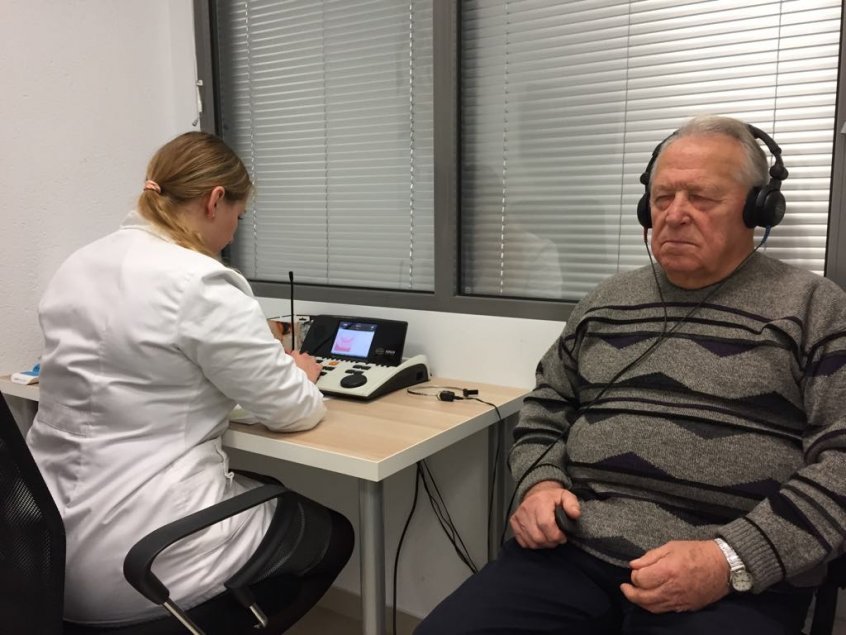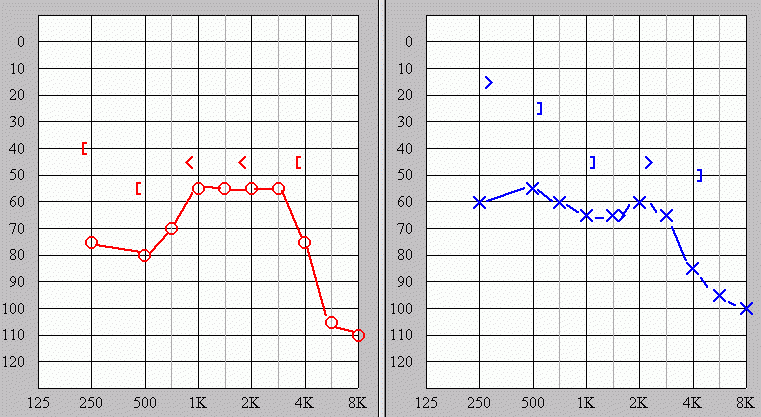Everyone understands that a good hearing is important in everyday situations and for quality of life. Health hearing helps us to communicate with people, to identify various sounds surrounding us, better to understand the environment.
Hearing loss can be caused by many different factors and circumstances. Hearing impairments can be genetically inherited (when the hearing impairment is identified at birth or in early childhood) or occurred (when it happens later in life). Hearing impairment or loss may occur as a result of disease or injury, infection or viral illness, intolerance (chemical poisoning), trauma, loud noise, lack of vitamins, mechanical ear injuries.
Hearing impairment can also be caused by the diseases of the internal organs (heart and cardiovascular diseases, blood diseases, endocrine diseases, kidneys diseases, cervical spondylosis, radiation sickness, lack of vitamins) and central nervous system disorders (vascular spasms, brain ischemic disease, epilepsy, encephalitis, neuroendocrine tumors, multiple sclerosis, atherosclerosis).
The senses become less efficient with age – including hearing. Thus, the majority of people with a hearing impairment who referred to the rehabilitation centers are elder people. Age-related hearing loss is the slow loss of hearing that most commonly occurs as people get older.

The purpose of the hearing test is to determine the degree of patient’s hearing sensitivity, to assess the type, nature and degree of hearing impairment.
The hearing test is completely safe and harmless. Before the hearing test, a hearing prosthetic specialist briefly and understandably explains to the patient what to do during the test and how this test works.
At OPERA hearing centers, a hearing prosthetic specialist examines the patient’s ear canal and eardrums by the modern equipment – video otoscopy. Video otoscopic examination involves using an instrument called an otoscope to look inside the ear. An otoscope transmits a bright light into the ear canal and has a tiny video camera which relays images to a TV screen. Patient can view on video screen display and see what we're looking at. During the video otoscopy, we can capture and print digital images of anything we find within the ear canal.
We carry out a hearing examination with a special medical equipment - an audiometer. An audiometer is used to determine a person's hearing sensitivity at different frequencies. Hearing sensitivity is checked by the air conduction and bone-conduction testing. Air conduction testing is performed in the sound booth using either speakers, headphones, or insert earphones. The signal travels through the air in the outer ear to the middle ear and then to the cochlea in the inner ear. In bone-conduction testing, instead of using an earphone, a bone sensor is placed before the ear on the skull. This allows for stimulation of the cochlea via mechanical vibration of the skull with almost no stimulation of the outer and middle ear. During the test different intensities of sounds, tones and a certain frequency range: from low to high (250Hz, 500Hz, 1000Hz, 2000Hz, 4000Hz, 8000Hz) are used.
Standard methods are used to determine the sensitivity of the hearing. The results of your hearing tests are mapped onto a chart called an audiogram, which gives a visual overview of your hearing loss and its impact on your everyday life. Reliable hearing test provides you a lot of information about ear disease.

The example of audiogram